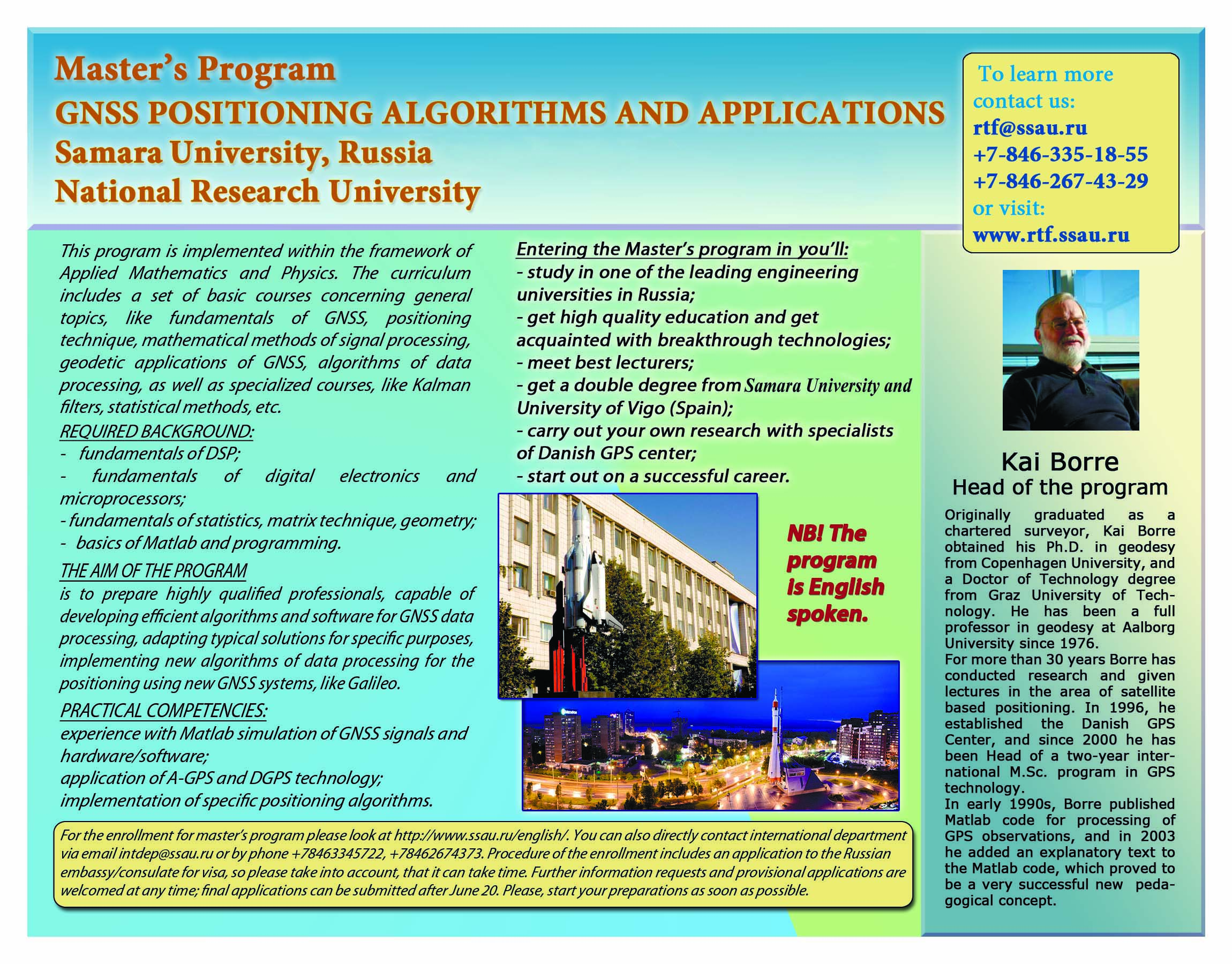03.04.01 "Applied Mathematics and Physics"
Qualification of the graduate: master
Graduate Department of Nanoengineering
The names of master's programs:
The program aims to develop and promote modern high technologies in the field of space navigation and remote sensing through the use of micro / nano-satellites. The focus is on satellite navigation and its various applications, including the monitoring of geophysical fields. (continue..)
- training Master of Applied Mathematics and Physics, able to carry out research, formulate and solve complex scientific and technical problems;
- building skills collective project work focused on obtaining new results;
- the use of advanced achievements of micromechanics, microelectronics and other advanced technologies;
Expected development of academic mobility of teachers and students, the creation of conditions for entry into the international educational space and close to the foreign master programs Space Engineer and Space Sciences.
The program was developed and implemented in the framework of the Inter-University Department of Space Studies, created in the Samara State Aerospace University, involving scientists of the Samara and Ulyanovsk State University.
The program is supported by the State Research and Production Rocket Space Center "Samara Space Center" and the company ISIS -Innovation Solutions in Space (Netherlands).
Features of the master's program:
- Extensive cooperation with leading foreign universities - partners from Belgium, Germany, Italy, the Netherlands, Sweden, Lithuania, Belarucii, Ukraine, which have signed an agreement on academic mobility and cooperation.
- The annual scientific seminar for undergraduates in the form of an international summer school space "Advanced space technology and experiments in space" with the participation of famous scientists and astronauts.
- Engaging lectures scientists of the Russian Academy of Sciences and leading specialists of the rocket and space industry.
- Conduct training (Research Practice) on the basis of leading foreign and domestic universities and research organizations.
- Participation of each of a student in actual research projects, including international ones, in the field of navigation and remote sensing, creating nauchnoobrazovatelnyh nano satellites for various purposes.
- Participation in scientific conferences, seminars and symposiums.
- Work on high-tech equipment, the use of modern software packages ProEngineer (mechanical design), Altium Designer (design of electronic systems).
The main disciplines that define the theme of the curriculum:
- Physics of near-Earth space
- System analysis of space missions
- Methods of measurement information processing
- Modern methods and means for sensing the earth's surface
- Satellite radio navigation and communication system
- Navigation and control in space
- Radio systems management micro / nanosatellites
- The modular design of the micro / nano-satellites
- Modern computer design technology micro / nano-satellites
The training used equipment and training materials produced and developed under the national project "Education" program of the National Research University Project CRIST «Reform of education in the field of space technology in Kazakhstan, Russia, Ukraine" (TEMPUS program of the European Union), including including:
- Laboratory of satellite navigation;
- Laboratory of Computer Engineering Technology;
- Systems Integration Lab microsatellites;
- Control Center flight control and microsatellites;
- GNSS positioning algorithms and applications
This program is implemented within the framework of applied mathematics and physics. The curriculum includes a set of basic courses concerning general topics, like fundamentals of GNSS, positioning technique, mathematical methods of signal processing, geodetic applications of GNSS, algorithms of data processing, as well as specialized courses, like Kalman filters, statistical methods, etc. (continue..)
The aim of the program is to prepare highly qualified professional, capable to develop efficient algorithms and software for GNSS data processing, adapt typical solutions for specific purposes, implementation of new algorithms of data processing for the positioning using new GNSS systems, like Galileo. Practical competencies: experience with Matlab simulation of GNSS signals and hardware/software, application of A-GPS and DGPS technology, implementation of specific positioning algorithms
Professional skills
The graduates will obtain following professional skills:
- Using GNSS technologies for positioning tasks;
- Development of new techniques of positioning using GNSS;
- Development of the dedicated software for solving positioning tasks;
- Development of models and algorithms used in positioning.
The field of professional activity:
The field of professional activity of graduates includes the areas of science, engineering, and technologies related to research, design, and application of the positioning algorithms and software.
Having graduated from this program you are prepared for the following professional activities:
- Software engineering;
- System engineering;
- Scientific research. The curriculum includes courses in mathematical modelling, software development, and dedicated courses in GNSS technology. Many courses are delivered by lecturers, invited from the leading centres, involved in GNSS technologies. General supervision is performed by the expert in GNSS technologies professor Kai Borre, who has comprehensive experience in GNSS technologies.
The curriculum includes courses in mathematical modelling, software development, and dedicated courses in GNSS technology. Many courses are delivered by lecturers, invited from the leading centres, involved in GNSS technologies. General supervision is performed by the expert in GNSS technologies professor Kai Borre, who has comprehensive experience in GNSS technologies.
Employment opportunities
After graduation you can work in research centres, universities, and enterprises involved in positioning applications.
- Physics and technology of nanoelectronic devices
